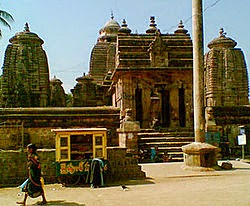Antharvedi is located at a distance of 130 Kms from Kakinada, 100 kms from Rajahmundry and 65 Kms from Amalapuram. In Kritayuga, Sage Sounaka and his colleagues gathered in Naimisaranya to conduct Satrayaga. In the their Leisure time, they used to learn about the distinguished and significant historical India Shrines from Suta, a quaranic narrator. One day, they asked him to tell about the greatness and significance of Antarvedi Shrine and of Lord Lakshmi Narasimha. Suta was pleased to tell the story which was once told by Lord Brahma to Sage Narada.
There are five important spots of this Holy shrine namely:
1.The Sea
2.The Sagar Sangam
3.The Vasishta River
4.The Raktakulya River
5.The Chakrateertham
It is said that there will be no re-birth on taking a dip at these places and on offering charities there. Performing ceremonial formalities to the ancestors at this holy-shrine is equivalent to these done at Gaya and Ganges. One on nearly visiting this place, will be blessed from with multitudes. People from distant place, like Varanasi, also visit this place, especially to participate in Lord Narasimha's Chariot procession in the month of Phalguna (January) and dolepournami celebration in the month of Phalguna (March). Then the lord is worshipped with panchamrita abhishekam. This shrine blesses the pilgrims with Mukti, and so it is also called the Mukti Kshetra. Antarvedi is also named after the Lord as 'Narasimhakshetra'.
Antarvedi has the sea in the East and the South the Godavari in the West and the Raktakulya river the North. It covers a distance of about four square miles. It is in the Razole Tq. of the East Godavari District. Special conveyance facilities are arranged for the convenience of the pilgrims coming from distant place to attend the annual Mela there. At the time of Mela, Antarvedi seems to be kaliyuga Vaikuntha. The Mela run for about nine days. It is One hundred and eight shrines of Lord Narasimha.
Antarvedi is said to be the second Varanasi by the grace of the Lord. The residents of the shrine have a fear of the floods or of the drought. A more wish to visit this holy place, will bless the devotees with desired results. Thus the great glory of the shrine is boundless.
2.The Sagar Sangam
3.The Vasishta River
4.The Raktakulya River
5.The Chakrateertham
It is said that there will be no re-birth on taking a dip at these places and on offering charities there. Performing ceremonial formalities to the ancestors at this holy-shrine is equivalent to these done at Gaya and Ganges. One on nearly visiting this place, will be blessed from with multitudes. People from distant place, like Varanasi, also visit this place, especially to participate in Lord Narasimha's Chariot procession in the month of Phalguna (January) and dolepournami celebration in the month of Phalguna (March). Then the lord is worshipped with panchamrita abhishekam. This shrine blesses the pilgrims with Mukti, and so it is also called the Mukti Kshetra. Antarvedi is also named after the Lord as 'Narasimhakshetra'.
Antarvedi has the sea in the East and the South the Godavari in the West and the Raktakulya river the North. It covers a distance of about four square miles. It is in the Razole Tq. of the East Godavari District. Special conveyance facilities are arranged for the convenience of the pilgrims coming from distant place to attend the annual Mela there. At the time of Mela, Antarvedi seems to be kaliyuga Vaikuntha. The Mela run for about nine days. It is One hundred and eight shrines of Lord Narasimha.
Antarvedi is said to be the second Varanasi by the grace of the Lord. The residents of the shrine have a fear of the floods or of the drought. A more wish to visit this holy place, will bless the devotees with desired results. Thus the great glory of the shrine is boundless.


















































